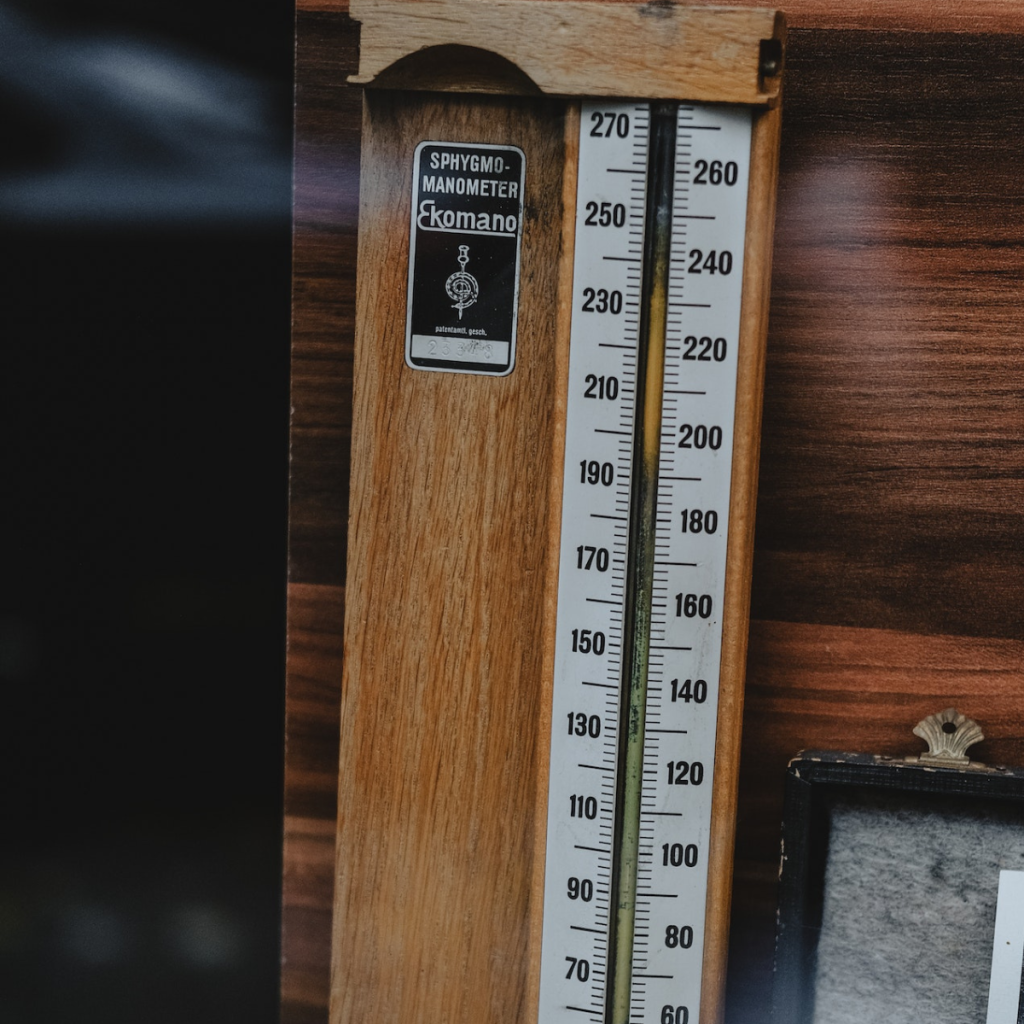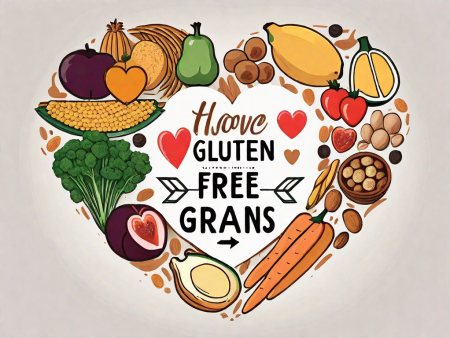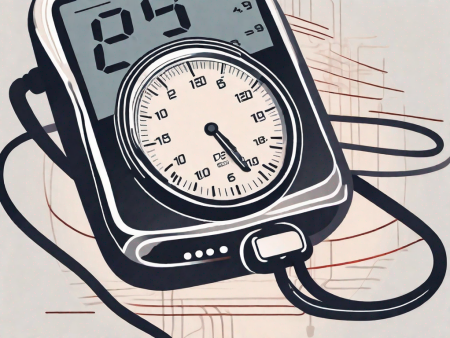Learn how adopting a gluten-free diet can help manage high blood pressure.
Discover the Benefits of a Gluten-Free Diet for High Blood Pressure
If you’re someone who suffers from high blood pressure, you may be familiar with the challenges of managing this condition. From monitoring your salt intake to keeping stress levels in check, maintaining a healthy lifestyle can be quite the juggling act. However, one aspect that often goes overlooked is the role of diet in blood pressure management. In recent years, a gluten-free diet has gained attention for its potential benefits in controlling high blood pressure. So, let’s dive into the world of gluten-free living and explore how it can positively impact your cardiovascular health!
Understanding High Blood Pressure: Causes and Risks

Before we jump into the gluten-free diet, it’s important to understand what high blood pressure is all about. High blood pressure, or hypertension, occurs when the force of blood against your artery walls is consistently too high. This can lead to serious health complications such as heart disease, stroke, and even kidney problems.
Several factors can contribute to high blood pressure, including genetics, age, obesity, and certain lifestyle habits such as smoking and excessive alcohol consumption. But did you know that your diet plays a significant role as well?
When it comes to managing high blood pressure, making smart dietary choices can have a profound impact. A well-balanced diet that is low in sodium, saturated fats, and refined sugars is typically recommended. But what about gluten?
A gluten-free diet primarily focuses on eliminating foods that contain gluten, a protein found in wheat, barley, and rye. For individuals with certain medical conditions such as celiac disease or gluten sensitivity, avoiding gluten is essential. But recent research suggests that there might be a connection between gluten and blood pressure regulation for everyone, regardless of gluten sensitivity.
The Role of Diet in Blood Pressure Management
While a gluten-free diet may not be directly linked to blood pressure regulation for individuals without gluten sensitivity, it is important to consider the overall impact of diet on blood pressure management. The key lies in understanding the various components of a healthy diet and how they can positively influence blood pressure levels.
One important aspect to consider is the consumption of sodium. High sodium intake has long been associated with increased blood pressure levels. This is because sodium attracts and retains water, leading to higher blood volume and subsequently higher blood pressure. By reducing sodium intake, whether through a gluten-free diet or other means, individuals can help lower their blood pressure and reduce the risk of hypertension-related complications.
In addition to sodium, saturated fats and refined sugars also play a role in blood pressure management. Diets high in saturated fats, commonly found in processed and fried foods, have been linked to increased blood pressure levels. Similarly, excessive consumption of refined sugars, such as those found in sugary beverages and desserts, can contribute to weight gain and obesity, both of which are risk factors for high blood pressure.
On the other hand, a diet rich in fruits, vegetables, whole grains, lean proteins, and healthy fats can have a positive impact on blood pressure. These foods are typically low in sodium, saturated fats, and refined sugars, making them ideal choices for individuals looking to manage their blood pressure levels.
Furthermore, certain nutrients found in these foods have been shown to have blood pressure-lowering effects. For example, potassium, which is abundant in fruits and vegetables, helps relax blood vessel walls, allowing for better blood flow and lower blood pressure. Similarly, foods rich in magnesium, such as nuts, seeds, and leafy greens, have been associated with lower blood pressure levels.
It is important to note that while diet can play a significant role in blood pressure management, it is not the sole factor. Regular physical activity, stress management, and medication, if prescribed by a healthcare professional, are also important components of a comprehensive approach to managing high blood pressure.
In conclusion, while a gluten-free diet may not directly impact blood pressure regulation for individuals without gluten sensitivity, it is crucial to focus on overall dietary choices that promote a healthy blood pressure. By reducing sodium, saturated fats, and refined sugars, and incorporating nutrient-rich foods, individuals can take proactive steps towards maintaining optimal blood pressure levels and reducing the risk of hypertension-related complications.
The Basics of a Gluten-Free Diet
So, what does a gluten-free diet entail? Let’s break it down.
A gluten-free diet is a way of eating that excludes the protein gluten. Gluten is found in grains such as wheat, barley, and rye. For individuals with celiac disease, non-celiac gluten sensitivity, or wheat allergy, following a gluten-free diet is essential for maintaining good health.
When following a gluten-free diet, it’s important to familiarize yourself with the foods that are safe to consume and those to avoid. Some common gluten-containing foods to steer clear of include bread, pasta, cereal, and baked goods made with wheat flour. These foods can wreak havoc on the digestive system of individuals with gluten-related disorders.
Instead, opt for gluten-free alternatives such as rice, quinoa, corn, and certified gluten-free products. These alternatives provide essential nutrients and can be used as substitutes in various recipes. For example, instead of using regular flour to make pancakes, you can use a gluten-free flour blend or almond flour.
Additionally, it’s crucial to read food labels carefully, as gluten can hide in unexpected places like sauces, dressings, and even certain medications. Some food additives, such as malt flavoring and modified food starch, may contain gluten. Therefore, it’s important to educate yourself about these hidden sources of gluten and choose products that are specifically labeled as gluten-free.
Remember, knowledge is power! By understanding the basics of a gluten-free diet and being aware of the foods to include and avoid, you can successfully navigate the world of gluten-free eating and maintain a healthy lifestyle.
The Connection Between Gluten and Blood Pressure
Now let’s talk about why a gluten-free diet might benefit your blood pressure.
High blood pressure, also known as hypertension, is a common health concern that affects millions of people worldwide. It is often referred to as the “silent killer” because it can go unnoticed for years, gradually damaging the blood vessels and increasing the risk of heart disease and stroke.
Scientific research on the link between gluten and hypertension is still in its early stages, but some studies have shown promising results. A small but significant body of research suggests that individuals who follow gluten-free diets may experience a reduction in blood pressure levels.
One possible explanation for this connection is that gluten can cause inflammation in the body, which may contribute to cardiovascular issues. Gluten is a protein found in wheat, barley, and rye, and it can trigger an immune response in individuals with celiac disease or gluten sensitivity. This immune response can lead to chronic inflammation, which has been linked to various health problems, including high blood pressure.
By removing gluten from your diet, you could potentially lower inflammation and support better heart health. In addition to reducing inflammation, a gluten-free diet often involves consuming more whole and unprocessed foods, such as fruits, vegetables, lean proteins, and healthy fats. These nutrient-rich foods can provide essential vitamins, minerals, and antioxidants that support cardiovascular health and help regulate blood pressure.
However, it’s important to note that more extensive research is needed to establish a definitive link between gluten and blood pressure. While some studies have shown positive results, others have found no significant association. It’s also worth mentioning that not everyone will experience a decrease in blood pressure by following a gluten-free diet. Individual responses to dietary changes can vary, and it’s best to consult with a healthcare professional before making any drastic adjustments to your eating habits.
In conclusion, while the connection between gluten and blood pressure is still being explored, there is some evidence to suggest that a gluten-free diet may have a positive impact on blood pressure levels. However, it’s essential to approach dietary changes with caution and seek guidance from a healthcare professional to ensure that you are making the right choices for your overall health and well-being.
Transitioning to a Gluten-Free Diet
Ready to take the plunge into the gluten-free world? Here are some tips to help you make a smooth dietary shift.

Tips for a Smooth Dietary Shift
1. Educate yourself: Learn about the foods you can and cannot eat on a gluten-free diet. Take time to familiarize yourself with gluten-free substitutes and alternatives available in your local grocery stores.
2. Seek support: Reach out to friends, family, or online communities who have experience with gluten-free living. Sharing your journey can make the transition feel less overwhelming.
3. Experiment with recipes: Don’t be afraid to get creative in the kitchen! There are countless gluten-free recipes available online that are both delicious and healthy.
4. Be patient: Adjusting to a new way of eating takes time. Be kind to yourself and give yourself room for trial and error.
Gluten-Free Recipes for Blood Pressure Control
Now comes the fun part – exploring tasty and heart-healthy recipes that fit within a gluten-free diet.
Delicious and Healthy Meal Ideas
- Quinoa-stuffed bell peppers with a side of roasted vegetables
- Baked salmon with lemon herb quinoa
- Grilled chicken and vegetable kebabs with a quinoa salad
- Vegetarian black bean and corn tacos wrapped in gluten-free tortillas
Remember to incorporate a variety of fresh fruits and vegetables into your meals for added nutritional benefits!
Potential Challenges and Solutions in a Gluten-Free Diet
While a gluten-free diet can offer numerous benefits, it’s important to be aware of the potential challenges that may arise.
Overcoming Common Hurdles
One common challenge is finding gluten-free options when dining out. However, with increased awareness around the gluten-free lifestyle, many restaurants now offer gluten-free menus or can accommodate dietary restrictions upon request. It’s always a good idea to call ahead or check online to see if gluten-free options are available.
Another challenge can be the cost of gluten-free products, as they tend to be more expensive than their gluten-containing counterparts. To mitigate this, consider incorporating more naturally gluten-free foods into your diet, such as fresh produce, lean proteins, and whole grains like rice and quinoa.
Monitoring Your Blood Pressure at Home
Keeping a close eye on your blood pressure is crucial for managing hypertension effectively.
Tools and Techniques for Accurate Readings
Investing in a reliable home blood pressure monitor is a fantastic way to stay on top of your numbers. Make sure to follow the manufacturer’s instructions for accurate readings, and don’t forget to record your measurements to keep track of any patterns or changes over time.
In addition, monitor your lifestyle habits, such as exercise, stress levels, and dietary changes, to identify any correlations with your blood pressure readings. Knowledge is power, so arm yourself with as much information as possible!
The Long-Term Impact of a Gluten-Free Diet on Blood Pressure
While the long-term effects of a gluten-free diet on blood pressure are still being researched, it’s essential to approach any dietary change with realistic expectations.
What to Expect Over Time
Remember that everyone’s body is unique, so individual results may vary. It’s possible that adopting a gluten-free diet may lead to positive changes in blood pressure levels for some individuals, while others may not notice a significant impact.
Ultimately, the goal is to create a balanced diet that works best for you, your body, and your overall health. Be open-minded, listen to your body, and consult with healthcare professionals for personalized advice.
Embark on your gluten-free journey with an open mind and a joyful attitude towards exploring new flavors and recipes. Remember, your health is in your hands, and discovering the benefits of a gluten-free diet for high blood pressure might just be the key to unlocking a healthier future!






